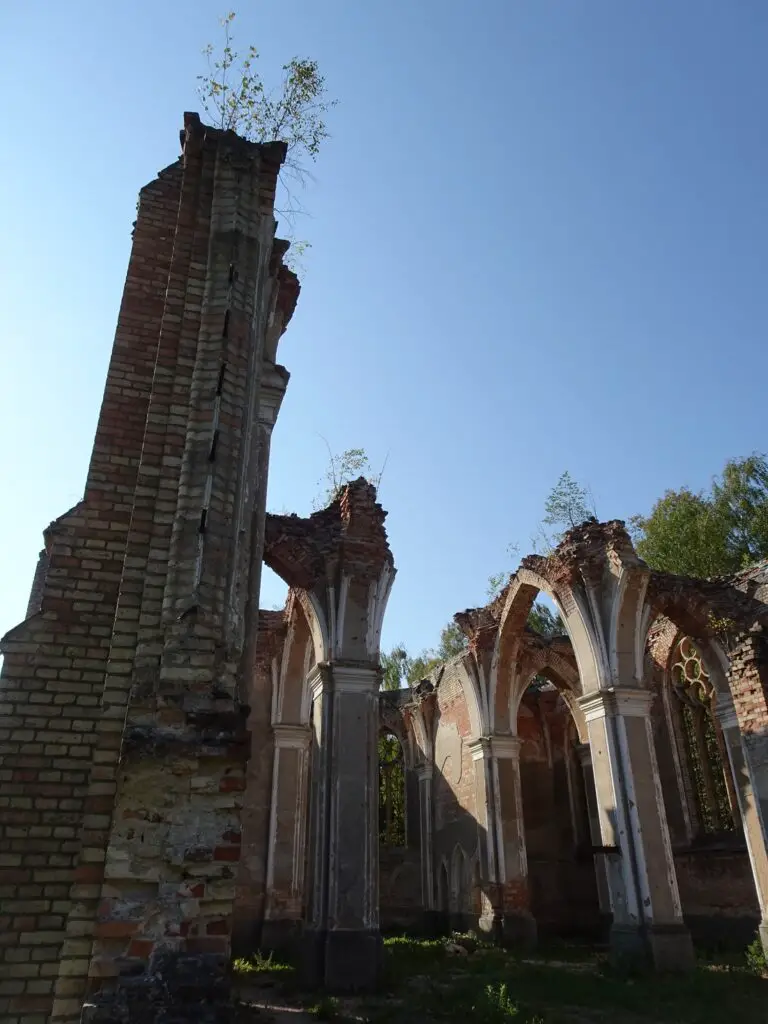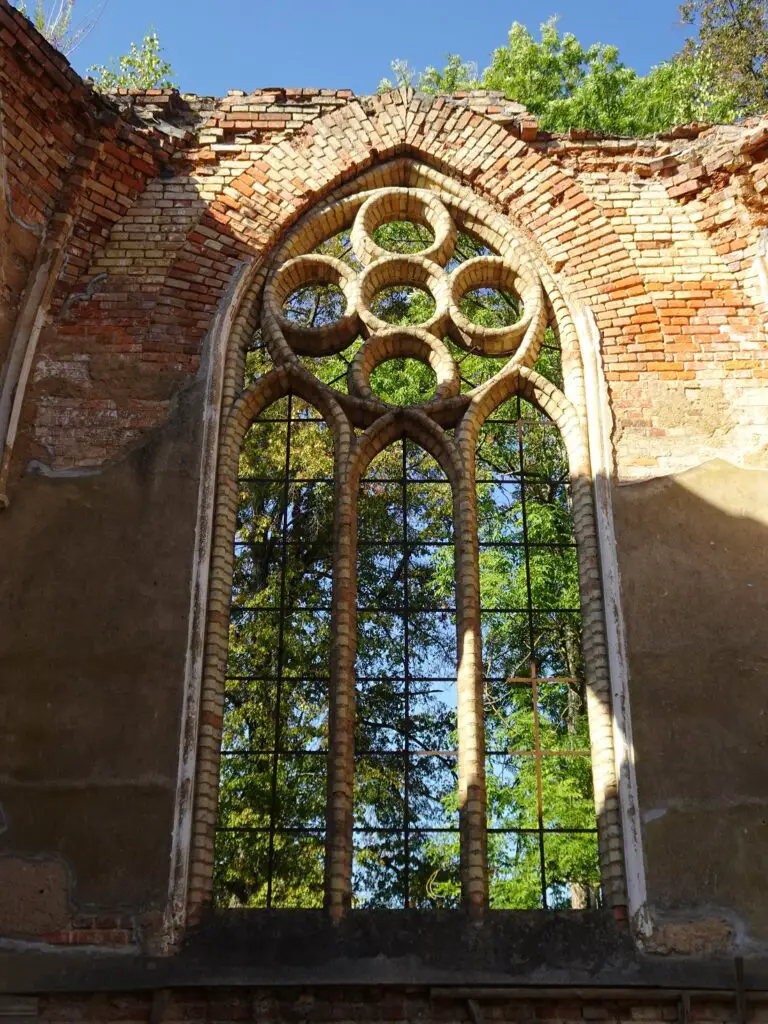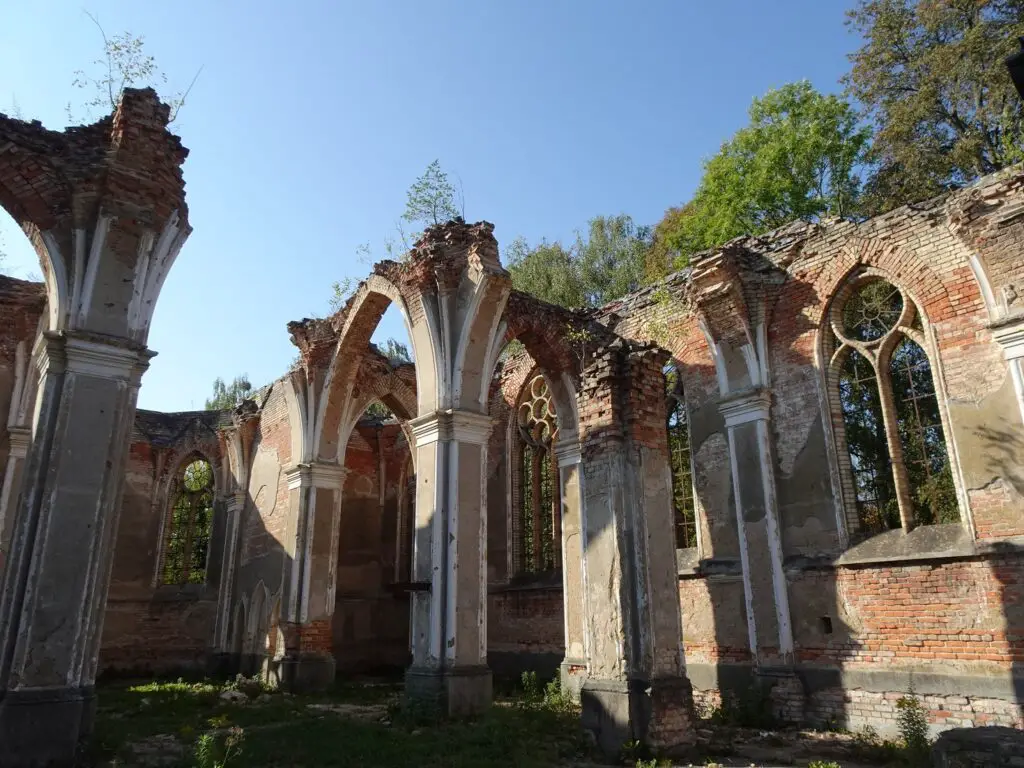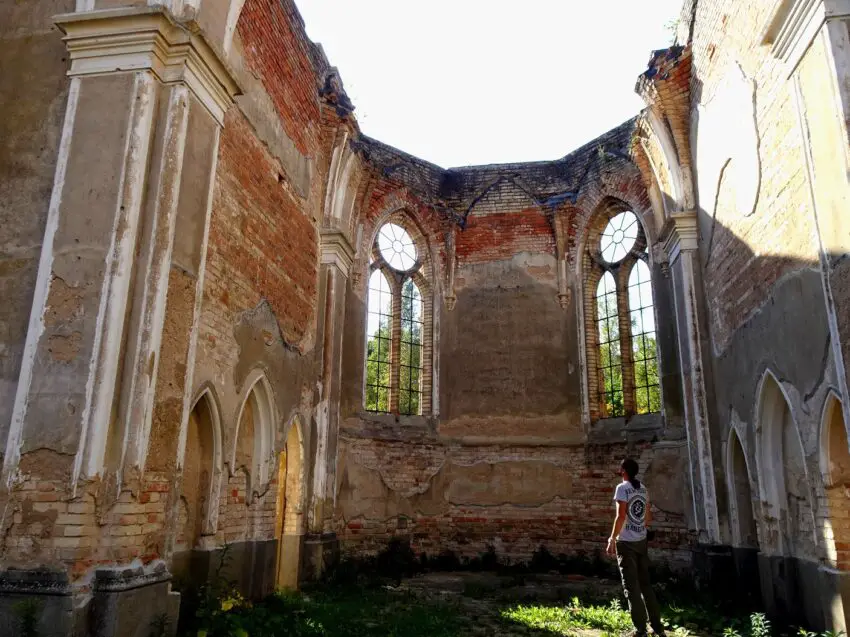One of the things I like to do while travelling is exploring any abandoned places I come across, mostly for the unique atmosphere and opportunity to take cool pictures.
So when I read that a tiny Polish village close to the Belarusian border sports the ruins of a 19th-century church, I knew we had to include it in our tour of the Podlaskie Region. Here’s what you need to know about visiting the ruins of the Sw. Antoni Church in Jałówka.
This post may contain affiliate links, and I might earn a small commission at no additional cost to you. For more info, click here.
What’s the History of the Church?
The Catholic Church was originally built in 1912 in the Neo-Gothic style and dedicated to St. Anthony of Padua (Sw. Antoni in Polish). The fact that the church could be constructed at all was quite a feat, as the Tsarist authorities of the time tried to push the Orthodox faith and suppress anything Catholic.

It served as a church for the local Catholic community for only about 30 years, however. In 1944 the German Army destroyed the roof and tower of the building while retreating from the Soviet troops, leaving only the shell standing today.
The church was never rebuilt, but once a year on St. Anthony’s Day (June 13) a mass is celebrated, using the wooden field altar that was placed in front of the ruins in 2000.
Visiting the Ruins
Visiting the ruins is super atmospheric, as you might expect from a place like this, and the otherworldly feeling is only increased by the peaceful surroundings. Small trees grow all around the shells of the church and while we were there, little birds dashed around us and butterflies fluttered everywhere.
The front and roof of the church is completely gone and all that remains are the walls of the nave and the apse where the altar used to stand. Two rows of columns remain, even forming the pointed arches that are typical of the Gothic Revival style in which the church is built.


The same goes for the slender lancet windows, whose glass-less stone-and-metal frames line the walls. In some parts the painted plaster covering the walls still remains, but more often than not the bare bricks are exposed.
The small covered wooden altar at the front of the building is used for the one yearly mass still celebrated at the church on St. Anthony’s Day every June. It’s a small building and ten minutes should be enough to properly explore everything (more if you want to take some cool pictures), making it a perfect pit stop on your way from Białowieża to Kruszyniany, for instance.
How to Get There
Jałówka is a tiny village, and you need your own transport to reach the ruins. The trip from Białystok takes about an hour, following the DK65 east and then turning south-east on DW686 at Gródek. The ruins are at the eastern edge of the village, only about a kilometre from the Belarusian border.
As checking out the church takes such a short time, it’s a good idea to combine it with other nearby attractions or just visit on your way between two other destinations. For instance, we stopped at Jałówka on our way from Białowieża Forest to the wooden mosques of Kruszyniany and Bohoniki.

To do that, you’ll have to follow the DW685 from Hájnowka, turn right on the DW687 in Nowosady and turn right again onto DW686 in Juszkówy Gród. If you want to continue to the Tartar Mosques and are up for an adventure, you can do like us and follow Szeroka Road north out of Jałówka village.
It’s a bumpy and dusty ride, but the small dirt track running close to the Belarusian border leads through some nice patches of forest and tiny villages that very likely haven’t seen a tourist in years. Once you cross the DK65, there are signs pointing to Kruszyniany.
Where to Go Next
Białowieża Forest – Podlaskie’s Main Tourist Attraction
Białystok – Podlaskie’s Capital and Biggest City


